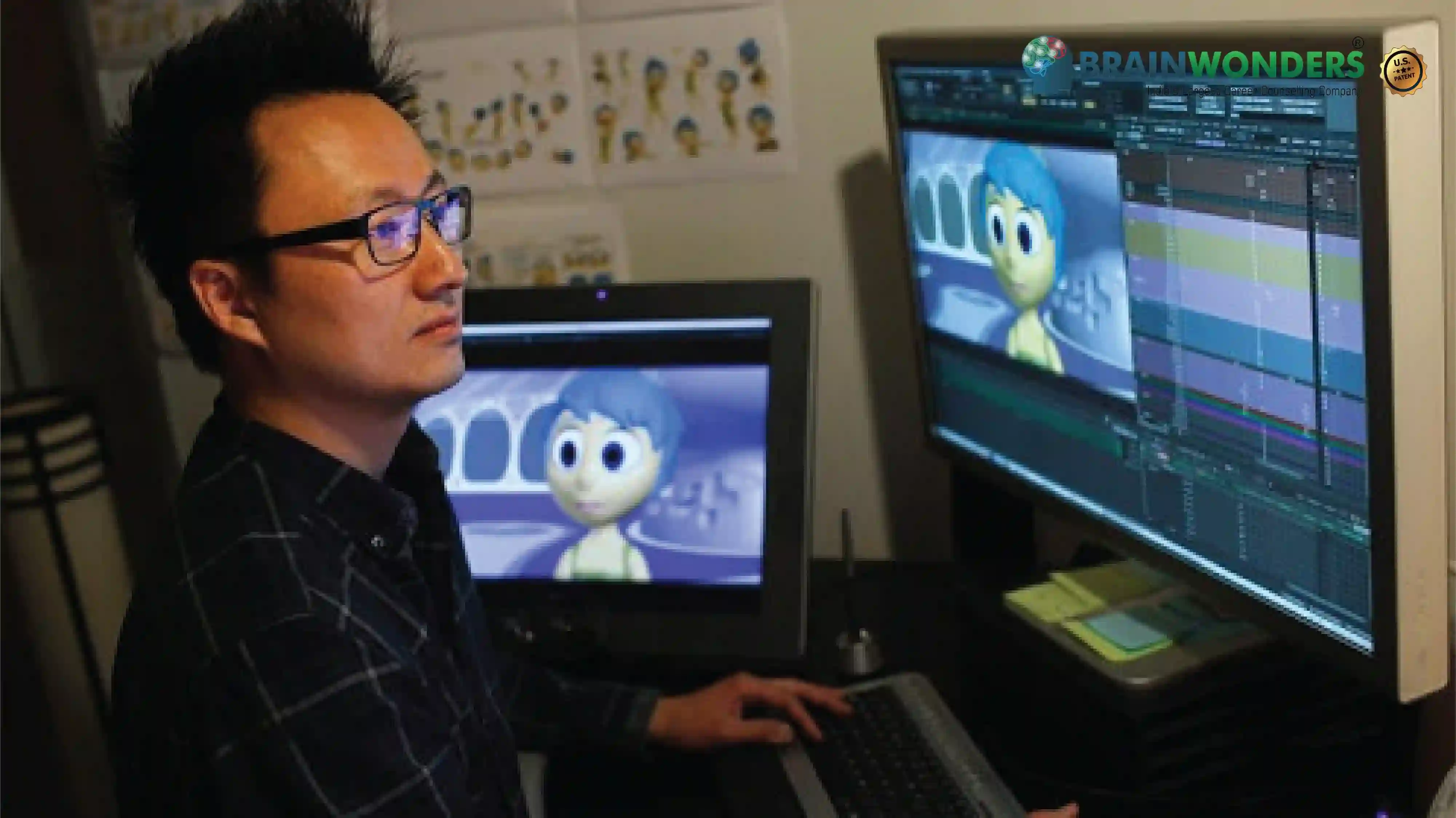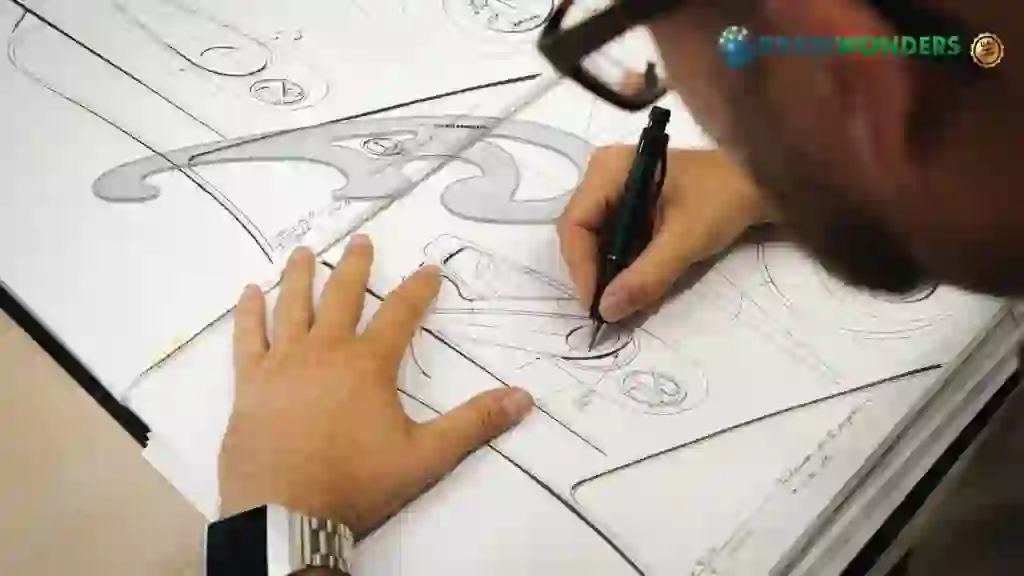How to become an Animator
Overview, Courses, Exam, Colleges, Pathways, Salary

Overview
Who is Animator ?
Animators are artists who generate frame-by-frame graphics in order to give the appearance of movement when they are shown in fast succession on a computer screen. They generate films for motion movies, television shows, advertising, video games, music videos, and other types of media by assembling a succession of static images that may be strung together in a predetermined order. They develop and construct every component of the animation, including the characters, scenery, emotions, body movement, and backdrop design, among other things. They make animations with the use of hand drawings, specialised software, models, and puppets, among other techniques.
They often tend to specialise in certain animation methods, such as 2D drawn animation, 2D computer animation, stop frame or stop motion animation, or 3D computer-generated animation, as well as specific animation styles. Because animation is a dynamic area, animators must remain up to speed with the newest innovations in the business in order to be successful in their careers, especially in terms of the tools used to create their work. A career in animation is often characterised by significant sketching and a thorough understanding of creative technologies.
When you can swiftly draw out your concepts, it makes your job a lot simpler. Because you will be in charge of transforming static photographs into moving and alive things, you will need to be very imaginative. It is also vital to have a thorough understanding of how persons and objects move. While these are important considerations when choosing a career in the profession, they are not the only ones. The following abilities will go a great way toward determining whether or not you will fit in. You will also get an understanding of the skills and knowledge required to be successful in the area.
Typical day at work
What does Animator do?
- Outline the animation requirements from the scripts and storylines of the production
- Communicate raw designs of the animation to the clients
- Create aesthetically pleasing animation designs for the production
- Create special effects, expressive character animations
- Create design templates to illustrate the design ideas to the clients
- Create design storyboards to map out the key scenes in the animation for the initial stages
- Refine animations as per the feedback to better suit the client’s needs
- Ensure that the animation frames are in sync with the audio
- Collaborate with fellow animators, clients, project directors and other production staff
- Stay up-to-date with the industry trends and developments
Abilities and Aptitude needed
What are the skills, abilities & aptitude needed to become Animator?
The following degree or foundation degree disciplines are especially useful to this field of employment, even though it is available to all graduates: Animation art and design Computer-aided engineering design for the moving picture Animation art and design Electrical engineering, film and video production, graphic design or illustration, model creation or sculpting, multimedia spatial design, and 3D design are all examples of creative fields. It is rare, but not impossible, to get admission without a higher education certificate. Exceptions may be allowed in the case of very brilliant individuals. Many animators believe that having an artistic background is equally as vital as having computer-related abilities.
Although it is not required, a suitable postgraduate degree in animation may improve your employment in the industry. Postgraduate courses may be found by searching. You'll need to demonstrate the following abilities: Character animation may need the use of specialised abilities, such as those in the areas of humour, dialogue, action, or singing and music. An animator's creative ability and imagination should be exceptional, and they should have a thorough knowledge of the interaction of colours, textures, and lighting effects.
Given the fact that they often collaborate with a variety of different experts, they should be competent team players with outstanding communication skills to succeed. They should be careful in their design and have a keen sense of aesthetics to create visually stunning animations with care. Their ability to manage their time and organise their work must be highly developed if they are to work effectively and produce great results when under time constraints. They should be well-versed in the specialised computer-generated modelling and animation applications available. They should be very well organised and have a natural talent for storytelling. Animation professionals must have strong design and project management abilities to create high-quality results under strict schedule constraints.
Salary
Salary for Animator?
The salary of an "Animator" can vary based on factors such as experience, expertise, the size of the employer, and the type of projects they work on.
Minimum Monthly Salary: The minimum salary can be from INR 15,000 to INR 30,000.
Maximum Monthly Salary: The maximum salary can be from INR 1,50,000 to INR 3,00,000 or more.
Annual Salary: The annual salary can be from INR 1,80,000 to INR 36,00,000 or more.
Highest Paying Job and Scope: The highest paying job for animators can be the role of a Lead Animator or Animation Director. The scope for animators is promising, with a wide range of opportunities in various industries such as film, television, advertising, video games, and digital media. Animators can specialize in 2D or 3D animation, character animation, visual effects (VFX), motion graphics, and more.
Pathways
How to become an Animator?
Entrance Exam
Entrance Exam for Animator ?
- Arena Animation Academy Entrance Exam
- DSK International Institute for Industrial Design, Animation and Gaming Entrance Exam
- Picasso Animation College Entrance Exam
- Thakur-Toonskool Advanced Animation Academy Entrance Exam
- Mudra Institute of Communications Entrance Exam
- Accel Animation Academy Entrance Exam
- FX School Of Animation Entrance Exam
- National School of Design Animation Entrance Exam
Courses
Which course I can pursue?
Best Colleges
Which are the best colleges to attend to become an Animator?
Industries
Which Industries are open for Animator?
- Animation Studios
- Media Agencies
- Film Production Houses
- Post Production Houses
- Advertising Agencies
- Web Entities (E Commerce sites, E Magazines, Websites etc)
- Computer and Mobile Game Developers
internship
Are there internships available for Animator?
Animators can obtain training through experience while working in entry-level jobs after earning degrees. Students in a degree program may complete internships to gain practical experience working with animators and will also give you contacts for future reference.
Career outlook
What does the future look like for Animator?
As a result of the increased demand for their skills in video games, film, and television, the career future for animators is promising. In addition to working for big animation studios, computer game corporations, marketing corporations, film studios, web design corporations, advertising agencies, and software corporations, animators may also work for small businesses and startups. Many of these experts prefer to be self-employed or work on a freelance or contract basis rather than being engaged by a company.
The fact that the majority of their work is done on computers means that they have the option of working remotely. They often work full-time, normal business hours in offices or studios, although they may be required to work longer hours to meet deadlines or complete projects on time. These people begin their careers as studio runners or junior animators and may progress through the ranks to positions such as design managers, lead animators, animation directors, and art directors, among other positions. They may also opt to teach animation to others who are interested in the field. Senior positions include additional paperwork, management of employees, and the generation of new ideas.
Career advancement is often achieved via freelancing work, which helps to establish the animator`s reputation, and this is likely to result in a steady stream of work as well as the opportunity to take on more senior tasks. When it comes to development, adaptability is vital, and if you can deal with puppets, models, and both drawn and computer-generated animation, you may find that you have more alternatives available to you in the future.



.webp)
.webp)

